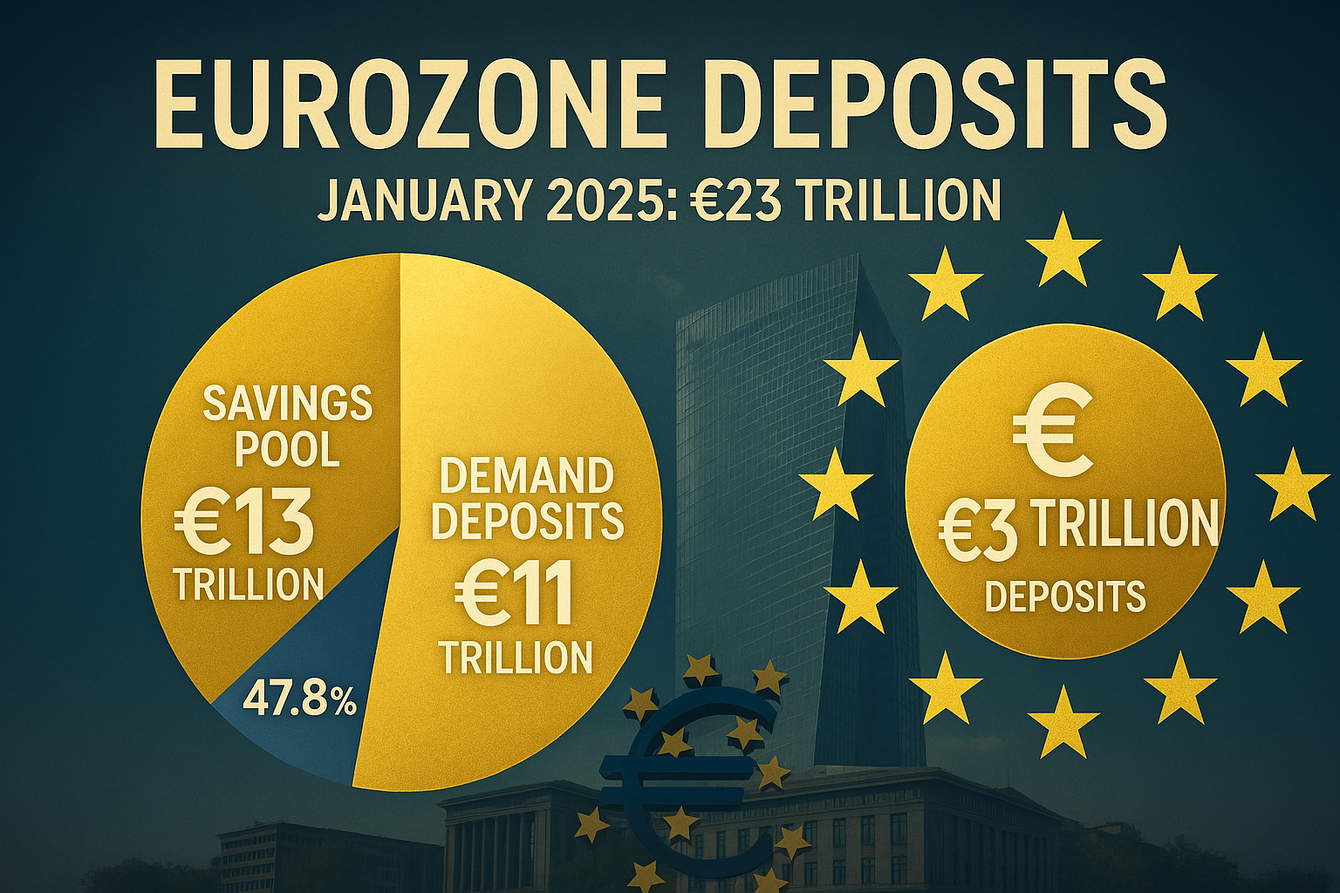Last week, European Commission President Ursula von der Leyen's announcement of a planned "Savings and Investment Union" caused widespread concern. She stated that the EU aims to mobilize peoples’ savings for urgent investments, such as infrastructure, climat, and defense.
For many savers, this sounds like a threat—an indication that the EU and its member states intend to “redirect” peoples’ savings or, effectively, expropriate them. Unfortunately, this concern is not entirely misplaced. Let’s explore how this could unfold.
Let’s start with some numbers. In January 2025, the deposits held by private customers in Eurozone banks totaled around €23 trillion (excluding bank bonds in this context). Of this, nearly €11 trillion are demand deposits, meaning the "savings pool" the EU is eyeing is close to €13 trillion—an enormous sum, almost equivalent to the GDP of the Eurozone.
How could the EU access this amount? There are three potential ways.
The First Way: The EU could instruct the European Central Bank to create a new term funding mechanism for banks, allowing them to refinance at lower interest rates than they could through traditional savings and time deposits. This would lead banks to become less willing to renew maturing savings deposits.
Once these deposits mature, they would be converted into sight deposits and moved to customers' checking accounts. Savers, no longer earning interest on their savings deposits, might seek alternative investments. The government could then offer savers government bonds—either directly or through funds investing in government bonds.
If savers agree to this offer, they would no longer be creditors to the bank, but instead creditors to the EU or its member states. This would allow the government to mobilize peoples’ savings and use them for infrastructure, defense, or other government spending.
It’s important to note that savings deposits, which previously served as a refinancing instrument for banks’ lending activities, would essentially be converted into "cash" and available for additional demand. This would increase the money supply (M1) and potentially drive inflation by raising the prices of goods and services.
Now to The Second Way: The EU could force banks to invest a certain percentage of their loan portfolios in government bonds. Rather than lending to businesses, homebuilders, and other entities, banks would use savers' funds to purchase government bonds. This could happen quietly and without much visibility to savers, meaning their money would flow into state coffers without them noticing.
However, this would come at a cost: the "crowding out" effect. As banks purchase government bonds, they would have fewer funds available to lend to the private sector, potentially stalling economic growth.
And now the Third Way: The EU could resort to forcing savers to invest their savings (or part of it) in government bonds—referred to as "compulsory government bonds." Germans have experienced similar measures before: during the Weimar Republic in 1922/23 and under the “Investment Aid Act” of 1952, which required businesses to contribute a portion of their profits to a fund supporting the basic materials industry.
We come to the conclusion that the EU has several ways to access peoples’ savings held with Eurozone banks. A voluntary or unnoticed “redirection” of savings into government control seems quite plausible. Compulsory measures would likely only be implemented if voluntary participation falls short of meeting the EU’s financial needs.
This is not an entirely new concept. In fact, during the early 1930s, the German National Socialists legally required banks and savings associations to invest customer money in government securities to finance the regime's armament and war efforts.
And even today, it’s common for large investors, like insurance companies, to be required to allocate part of their portfolios into government bonds—thus transferring people’s money into the hands of politicians.
The EU’s plan to seize people’s savings, however, would take this to a whole new level—absorbing peoples’ lifetime savings to fund state projects and even war. It is against this backdrop that holding gold is gaining attractiveness for savers and investors in Europe. In fact, developments in the EU are actually making a new case for gold.
Those who hold physical gold are, on the one hand, protected from the euro inflation created by the European Central Bank. Above all, however, gold can be stored outside the euro banking sector, meaning it is beyond the state's reach and, in this way, provides much better protection against expropriation than euro bank deposits.
You may be wondering: How likely is this scenario? What would it mean for interest rates, inflation, the exchange rate and your investment strategy? Answers to these questions—and more—can be found in Dr. Polleit’s BOOM & BUST REPORT. For investors who truly want to understand what’s coming and how to protect and grow their capital, all the details are available at www.boombustreport.com.

